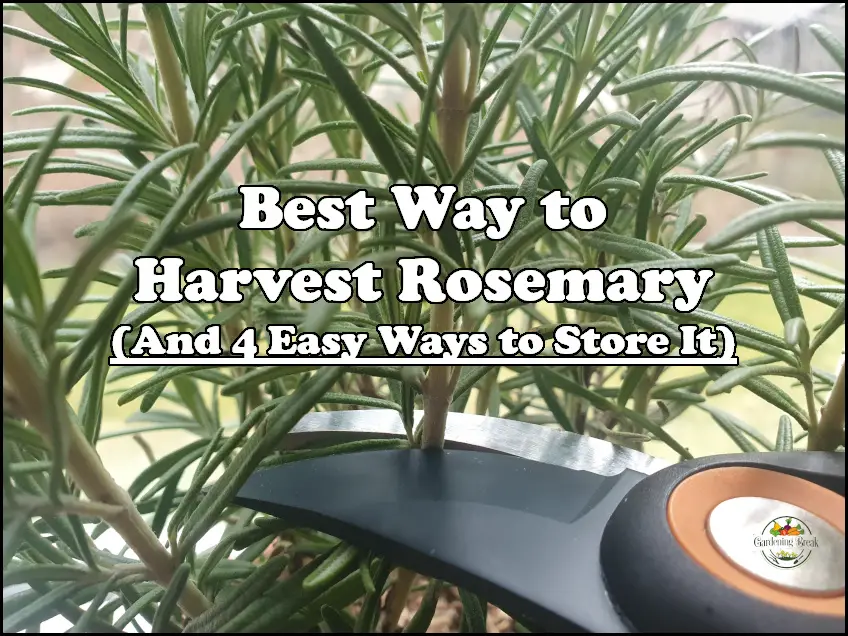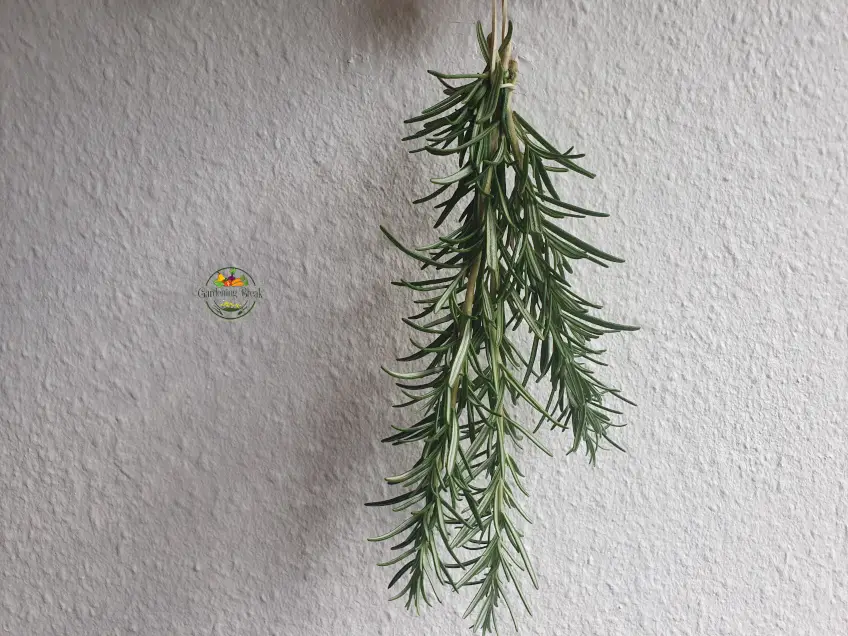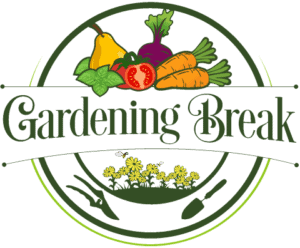In this article, I show and explain how I harvest my rosemary so that it keeps growing. In fact, your rosemary is going to grow even better and be even more productive than before if you use the harvesting method I share in this article. You will also learn about the best time of the year to harvest rosemary and 3 easy methods I use to store it for a long time.

Easiest Way to Harvest Rosemary So It Keeps Growing
The best way to harvest rosemary is to cut back stems by up to two thirds with sharp pruning shears. Doing so causes two or more new stems to grow, causing the plant to become bushier and more productive than before.
A lot of people mistakenly think that a stem will just grow back little by little if you cut it, but the truth is much more exciting.
When you cut a rosemary stem, the energy that was used on growing that stem is diverted into the leaf nodes near the cut, usually causing two or more of them to grow as new stems. This is the best way to cause your rosemary to become bushier and more productive. If you want to read more about this, head over to my article on this link.
It is not a complicated method at all, but if you don’t know about it and don’t cut stems when you harvest your rosemary, you are missing out. All you have to do is to cut stems like I do in the photo above.
It is important that you use clean and sharp pruning shears when you harvest your rosemary since a clean cut significantly reduces the risk that pests and diseases attack your plant. I use and recommend these pruning shears from Amazon. They are simple and inexpensive but do the job extremely well.
One thing you have to keep in mind when you harvest rosemary is that you shouldn’t cut the stems all the way back. If you do that, it can take a while for them to grow back, so I recommend that you cut the stems at least a few inches (about 5-10 cm) from their base.
You can harvest quite a lot of rosemary at the same time, but I don’t recommend cutting the whole plant back by more than half at the same time. I usually only harvest what I need unless I harvest some extra that I want to store for later use. I also explain how I store my rosemary later in this article.
Best Time of the Year to Harvest Rosemary
The best time of the year to harvest rosemary is in the spring and summer since this is when the plant grows the most.
That said, if you only need a couple of sprigs, there is absolutely nothing wrong with harvesting them at any time of the year. I do it all the time. Just make sure you only take what you need and don’t do it too often. Large rosemary plants can be harvested more often than smaller ones.
I remember talking to a couple of employees at a garden center a while ago about this and they explained that while it is best to harvest rosemary in the spring or summer, it mostly means something if you harvest a lot and cut your plant back by half or so.
They said that if you only need a little bit of fresh rosemary once in a while, you should just go for it. That’s why I started doing it and I haven’t had any problems with it. Just keep in mind that it doesn’t grow back nearly as fast during fall or winter as it would during spring or summer.
There are actually a couple of really good benefits from cutting your rosemary back (also called pruning) by a lot once a year or so. You can read about that in the article on this link.
3 Easy Ways to Store Rosemary for a Long Time
Now that you know precisely how you’re supposed to harvest your rosemary, you should learn how you can store it for a long time so you can use it whenever you want.
I have three methods that I use to store my homegrown rosemary in different situations and for different purposes. I explain how to do it and in which situations each method works best below.

Hang drying
Hang drying is the easiest way to preserve rosemary. It is the method I use most frequently for my own rosemary and other herbs.
All you have to do is tie a string around the base of your freshly harvested rosemary sprigs like I have done in the photo above. Once you have done that, hang them upside down in a dry spot where they have air all the way around them and ideally some airflow.
Once the sprigs are completely dry, you can use them as they are, but I like to chop them finely in a blender and put it in jars. You can use it as it is or you can mix it with salt to get a nice homemade rosemary salt.
Freeze fresh rosemary
This is probably the easiest way to keep your freshly harvested rosemary as fresh as possible while still preserving it for a long time.
All you have to do is to place the stems or sprigs in a container or a bag that can stay in the freezer and freeze it.
I like to use this method for preserving whole rosemary stems and sprigs with the leaves on, so I can use them whole in cooking.
Freeze fresh rosemary in ice cubes
Freezing rosemary in ice cubes is a fun method I have used several times. It keeps the rosemary relatively fresh, which means it is a great way to preserve taste and texture.
To do this, you should separate the rosemary leaves from the stems and fit as many as you can into an ice cube tray which you then fill with water and put in the freezer.
I found that you can fit a lot of rosemary into each ice cube if you chop it finely.
You can use these rosemary ice cubes by just putting them directly in hot dishes as you cook so that the ice melts and the rosemary is mixed into the dish.

